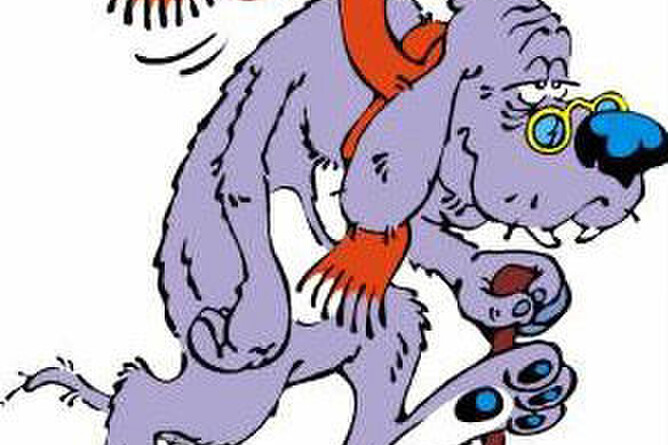Nose to Tail is very fortunate to have a great variety in our dog pack, a wonderful mix of people (and dogs) who share a similar love for life and health. And sometimes they are even able to offer great advice to other dog owners. This month our good pal Tania Evans, a canine fitness coach, shares her expertise on how to treat Canine Osteoarthritis.
How to treat Canine Osteoarthritis
The number one treatment goal is for the dog is to stay active as this is a critical component in managing osteoarthritis.
Pain control is also key, unless we have the dog's pain under control then we are not going to get improved function or increased muscle strength. Pain control is achieved through veterinary prescribed drugs as well as physiotherapy techniques.
The physiotherapy techniques for pain management include cryotherapy (cold therapy), moist heat, electrical stimulation, massage and laser therapy. Keeping the joint moving with a full range of motion can be achieved through specialised range of motion exercises, hydrotherapy and stretching. Restoration or maintaining the dog's ability to function day to day can be improved by using therapeutic exercise.
Which exercises can my dog do at home?
Some of the common exercises that could be used for the arthritic patient are cavaletti exercises to help with limb function and lifestyle movements. The 'sit to stand' exercise is used to build rear end muscle strength. Simple weight shifting is low impact and helps to maintain and improve muscle strength. Controlled stair climbing is ideal for weight bearing, limb function and lifestyle movements. Walking backwards is also great for all over body conditioning. Hydrotherapy and land based treadmill can help improve overall condition too.
Also, balance exercises can be used to help the dog with lifestyle movements. Weight shifting and walking on unstable surfaces encourages your dog to work their muscles harder, which is great for building muscle strength. Even just walking your dog in circles or in a figure-8 helps to keep your dog weight bearing on compromised joints and maintaining muscle strength around those joints. Weight management can be an important consideration for the osteoarthritic dog as we don’t want any extra strain and stresses on compromised joints.
Easy does it
It may also be advantageous to implement some lifestyle adaptations, like using a ramp instead of jumping in & out of the car. Limiting slippery floor surfaces by the strategic placement of some rugs can be helpful to reduce the chance of injury and to boost your dog’s confidence in moving around the house.
If your routine is to exercise your dog first thing in the morning, then I can make suggestions on how to warm up your dog's muscles and compromised joints before exercising to get maximum benefit and enjoyment out the walk. Remember that providing mental stimulation is also important to keep your dog satisfied when physical exercise is limited.
Tania Evans
DipAnPhys
Canine Fitness Coach
Want to know more about doggy fitness? Do you have more questions regarding canine osteoarthritis? Contact Tania on tania@pawsitivelifestyles.co.nz

